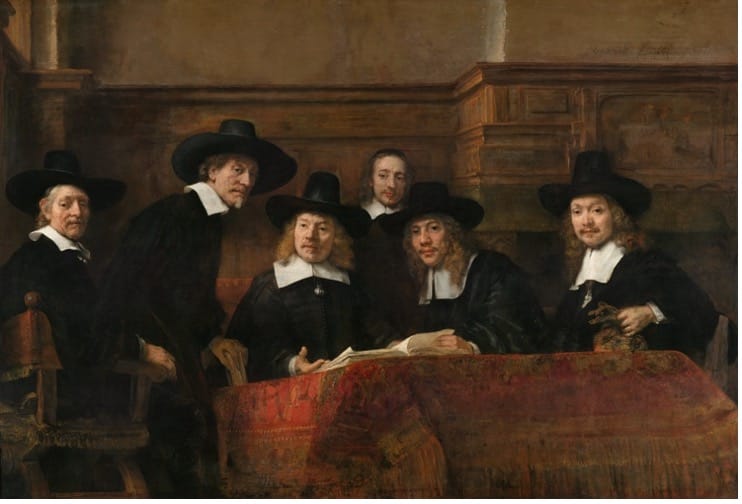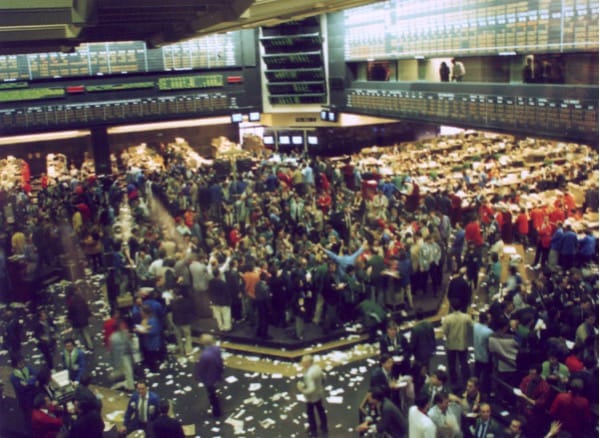Arguably the greatest breakthrough of blockchains and cryptocurrencies is that they have unlocked a fundamentally new way for humans to organize. For the first time, unaffiliated, untrusting actors, can build together towards a positive-sum outcome, even with no knowledge of each other. Blockchains provide a trustless framework where participants don’t need a central authority – or even each other’s goodwill – to create a whole that is greater than the sum of its parts. Instead, code and incentives ensure cooperation. This is more than just a novel technology; it’s a breakthrough in organizing people at scale.
The SEC issuing DoubleZero a No-Action Letter for 2Z recognized how the 2Z powers value transfer, incentives, and security across the network of contributors. To appreciate how revolutionary this is, it helps to look at how groups have organized throughout history – from medieval guilds and farmer cooperatives to modern exchanges and open-source communities – and how crypto now propels us into a new era of coordination.
Guilds: Trust Among Craftsmen

In medieval times, guilds emerged as an early framework for group organization. A guild was essentially an association of craftsmen or merchants formed for mutual aid, protection, and the advancement of their trade interests. Guild members banded together to set quality standards, enforce fair practices, and support each other in business. Only members of a guild could practice a craft in a town, which gave them collective bargaining power and a sense of trust within the group. In an era with weak central regulation, the guild’s internal rules and reputation created the trust needed for commerce. In some instances, guilds spanned across borders, languages, and cultures. By pooling resources and knowledge, guilds ensured that each individual’s success was linked to the group’s integrity. This model laid groundwork for later organizations by showing that shared rules and identity could bind people together for mutual benefit.
Cooperatives: Pooling for the Greater Good
In the 19th and 20th centuries, cooperatives arose as another way people organized to strengthen their collective position. For example, farmers’ cooperatives allowed individual farmers to pool their resources to achieve economies of scale. Whether buying supplies in bulk or jointly marketing their crops, the idea was to achieve better outcomes through cooperation than each farmer could alone. These co-ops were often member-owned and democratically governed, meaning each farmer had a stake and a vote. Much like guilds, trust was built through membership – you trusted fellow co-op members because everyone had shared goals and incentives. By banding together, farmers could access markets, services, or pricing power that individually would be out of reach. The cooperative movement showed how aligning incentives among peers, each both an owner and a beneficiary, could create a whole stronger than its parts.
Exchanges: Institutionalizing Trust

As capitalism became more complex, commerce scaled, and markets became more efficient, the need arose to organize strangers in trade. This led to the formation of exchanges, formal marketplaces like the Chicago Mercantile Exchange (CME) and the Chicago Board of Trade. In the late 19th century, groups of traders and merchants created exchanges to bring order and trust to buying and selling commodities. The CME was founded in 1898 as the “Chicago Butter and Egg Board” – essentially a farmers’ and traders’ collective, which for most of its history it operated as a member-owned, non-profit organization. Members governed by setting the rules, ensuring fair standards, and handling disputes. This built confidence among participants who often didn’t know each other.
Crucially, exchanges introduced mechanisms like the clearinghouse to further bolster trust. A clearinghouse acts as a neutral middleman between buyers and sellers, guaranteeing that both sides honor their obligations. By having the exchange (via its clearinghouse) step in to settle every trade, traders could do business with strangers without fear of default. In short, exchanges institutionalized trust: strangers in a bustling trading pit could cooperate under shared rules and rely on the exchange to enforce commitments. This model showed the power of centralized coordination to enable large-scale collaboration – but it still required a trusted central entity (the exchange and its clearing system) run by known members.
Crypto Networks: A New Coordination Layer for Humanity
Blockchains and crypto networks take global coordination to the next level. Public blockchains like Bitcoin and Ethereum introduced an organizing principle that does not rely on trust in people or institutions, but in unbreakable math, verifiable code, and pre-programmed incentives. In a blockchain network, participants can reach consensus and cooperate without knowing or trusting each other. The rules are transparent and enforced by the protocol itself. This means strangers around the world can collectively maintain a ledger of transactions, contribute resources, or govern a system purely through cryptographic assurance.
Building Trustless Infrastructure: DoubleZero
One powerful illustration of this new paradigm is DoubleZero – a project which leverages crypto principles to build physical infrastructure in a way previously unimaginable. DoubleZero is creating a global fiber-optic network optimized for blockchains and distributed systems, built not by a central entity but by independent contributors around the world. In traditional fiber networks, only large tech corporations or governments have the resources to lay cables and nodes across continents. But DoubleZero’s approach is different: it’s an open, permissionless network where anyone can contribute, and in return help run a faster, more resilient, high-performance network. Every new contributor strengthens the network for all existing users, and new contributors are economically rewarded by the network as a whole. This is crowdsourcing infrastructure through crypto incentives. The network’s design ensures that even though participants don’t necessarily trust each other, they can trust the overall system to fairly integrate and compensate their contributions (much like Bitcoin miners trust that when they mine a new block, the rest of the network will recognize it as valid). No contributor has unilateral control over the network.
Diverse contributors all collaborate under the DoubleZero banner, aligning their efforts through the project’s token economics and open-source code. Nobody unilaterally “controls” the network; instead, they strengthen and secure it by participating as peers. DoubleZero exemplifies how crypto enables a new kind of industrial guild or consortium – one that is open to anyone with the means to contribute, and which grows organically as more independent actors join. Projects like this simply wouldn’t have been feasible before crypto. Without a blockchain-based coordination model, how could you trust random parties to jointly run critical infrastructure? How would you reward them for their efforts or punish them for their errors? Blockchains solve this problem. DoubleZero’s community is bound together not by legal contracts or a corporate org chart, but by a protocol – a living example of coordination superpower: unaffiliated actors achieving something collectively that was beyond any of them alone.
Building the Future: Jump Crypto’s Motivation
All these developments – from trustless networks to decentralized high-performance infrastructure – highlight a new frontier in human organization. We now have the tools to coordinate on a global scale with minimal trust, creating systems that are more open, robust, and innovative than traditional top-down models. At Jump Crypto, this vision is one of our biggest driving forces. We see public blockchains and related projects as not just a new financial system, but a new way of building and organizing. It’s why we’ve been core contributors in projects like Pyth (which brings data publishers together to form a decentralized oracle network) and Wormhole (which links disparate blockchains into one interoperable web). It’s why we’re building Firedancer to scale Solana and contributing to DoubleZero to reimagine internet infrastructure. This infrastructure is necessary to enable the building of projects like Shelby, which is being built to deliver high-performance, best-in-class decentralized storage. Each of these projects requires overcoming barriers to innovation, fueled by collaborative engineering and crypto incentives.
We believe that the coordination superpower unlocked by blockchains will underpin the next decades of innovation. It’s no coincidence that policymakers are now catching on to crypto’s broader promise as a coordination layer. Organizing unaffiliated actors to challenge incumbents was once thought impossible but is happening today on blockchains. We are excited by the leadership shown by the SEC in recognizing the future trustless era through their No Action Letter issued to Double Zero.
